|
Brown-Lipe-Chapin Division of General Motors Corporation in World War
Two
Syracuse, NY
1936-1961
(In 1961 it became part of Ternstedt Division.)
This
page updated 10-18-2022.
A Brown-Lipe-Chapin Division initiated
operations for General Motors on January 13, 1936, when it began making
automotive components for GM vehicles being produced on the east coast.
Included were many of the same items being produced by the
Guide-Lamp Division of Anderson, IN which included headlights, taillights, hubcaps and
bumper guards. With the U.S. military beginning to re-arm,
Brown-Lipe-Chapin took on its first military contract on September 14,
1940 for the Browning .30 caliber M2 aircraft machine gun.
Original plans called for the Division to
switch to the .30 caliber water cooled machine gun from the M2 air
cooled aircraft machine gun. Tooling
started for this conversion when the Army Air Forces decided that Brown-Lipe-Chapin was to produce the M2
.50 caliber aircraft machine gun for the rest of the war. New tooling
started in September of 1942, and the Division
started volume production of the .50 caliber M2 aircraft machine gun in March of
1943.

Brown-Lipe-Chapin Division won the Army-Navy
"E" Award three times during World War Two.
Brown-Lipe-Chapin
World War Two Production Statistics: The
Brown-Lipe-Chapin Division of General Motors produced a total of 215,208
machine guns for the war effort. 95,419 were Browning .30 caliber M2
aircraft machine gun and 119,789 were Browning .50 caliber M2 aircraft machine
gun. The division also made .30 caliber M1 carbine barrels.
The contract value the division had for the
.30 caliber M2 aircraft machine guns was $22,684,000. The .50
caliber M2 aircraft machine gun contract was worth $143,089,000.
|
Brown-Lipe-Chapin World War Two World War Two Machine Gun Production by
Year |
| Type |
1941 |
1942 |
1943 |
1944 |
1945 |
Total |
| Browning M2 .30
calber aircraft |
982 |
24,262 |
8,007 |
62,168 |
0 |
95,419 |
| Browning M2 .50
calber aircraft |
0 |
0 |
33,213 |
62,168 |
24,408 |
119,789 |
|
Total |
982 |
24,262 |
41,220 |
124,336 |
24,408 |
215,208 |
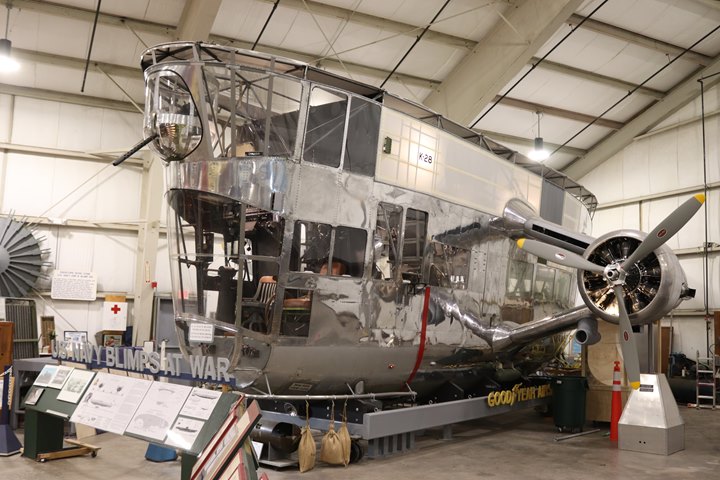
Here is an interesting and little known
application for .30 M2 machine guns built by the Brown-Lipe-Chapin
Division of General Motors. Goodyear-built airships had one .30 M2
mounted in the front of the gondola. This is the only fully
restored gondola of the 134 K-ships built during World War Two and is from
Airship K-28.
Author's photo from the New England Air Museum added 11-14-2017.
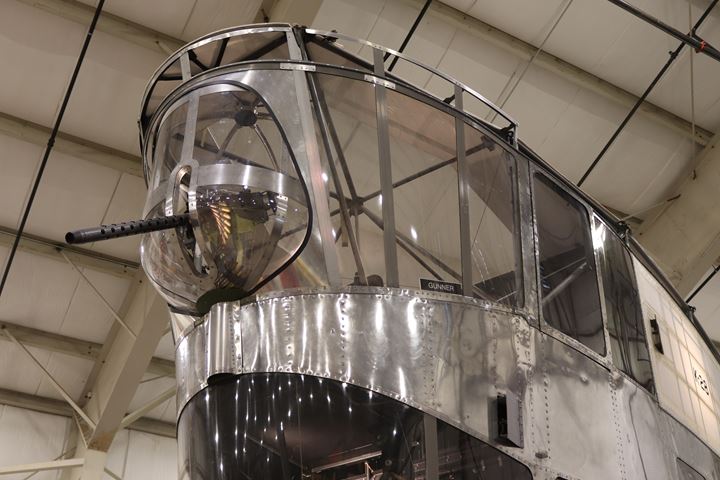
Author's photo from the New England
Air Museum added 11-14-2017.
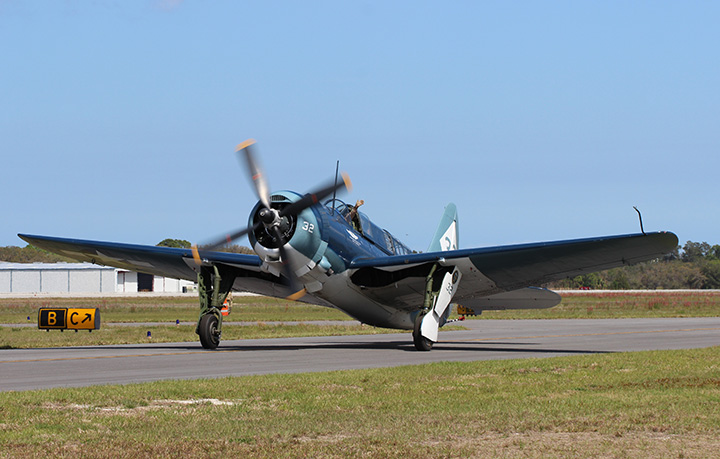
The Curtiss SB2C Helldiver was the last of
the US Navy's dedicated dive bombers, and the last aircraft with rear
protection provided by Browning .30 caliber M2 aircraft machine guns.
Author's photo from the 2014 Tico Airshow.
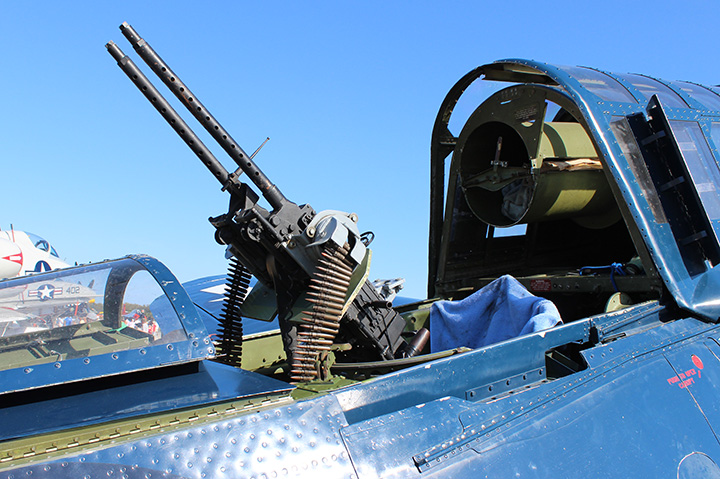
The .30 M2 had a rate of fire of 1,000
rounds per minute. That was twice the rate of fire of the infantry
version of the weapon. It was also one third lighter.
Author's photo.
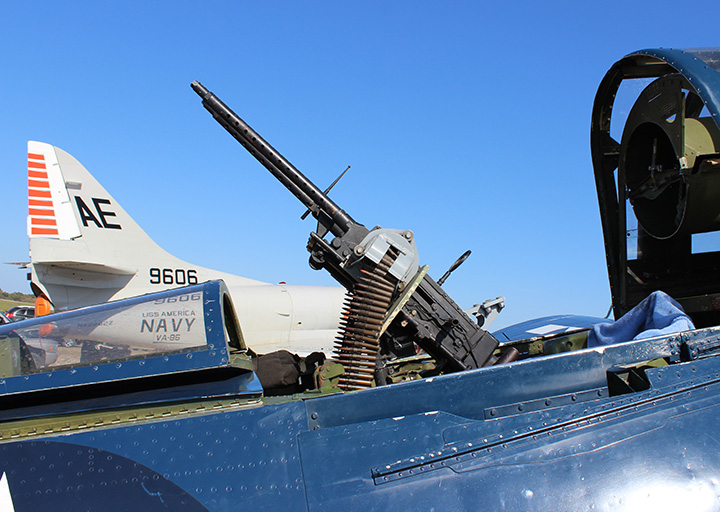
Author's
photo.
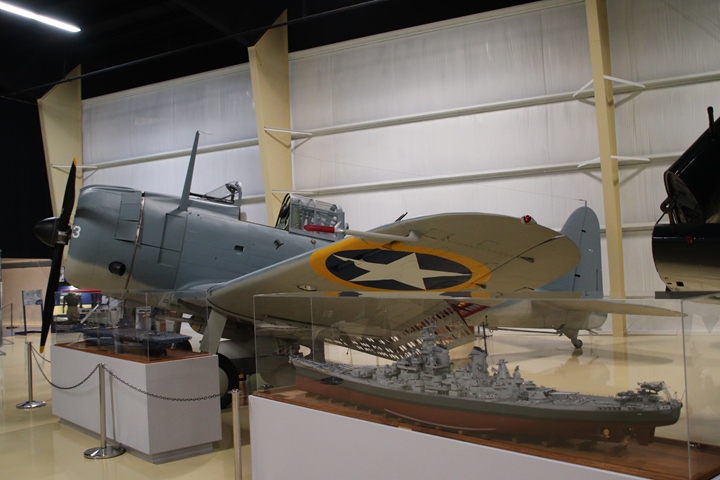
This SBD-3 is on display at the Air Zoo
Aerospace and Science Museum, Kalamazoo, MI. Author's photo.
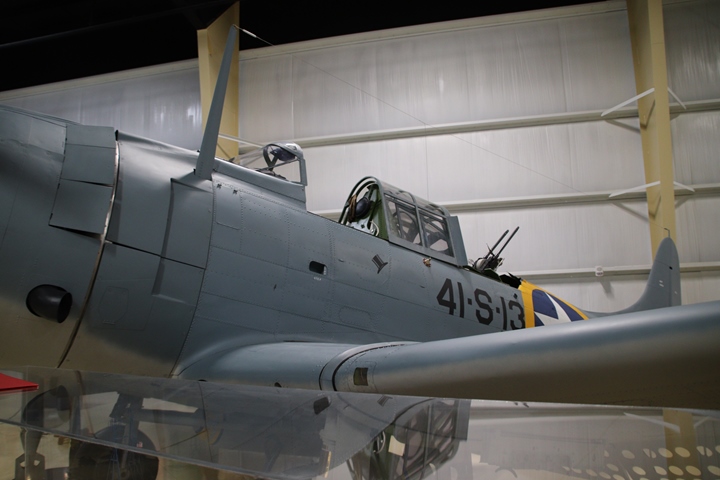
It also had rear protection provided
by Browning .30 caliber M2 aircraft machine guns. Author's photo.
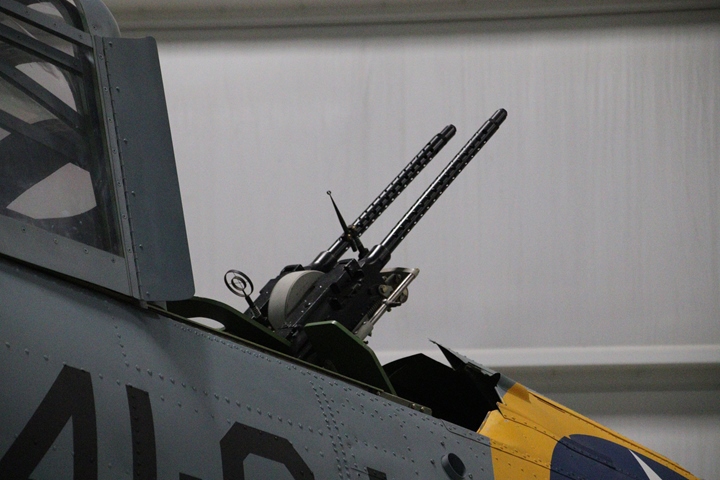
Author's photo.
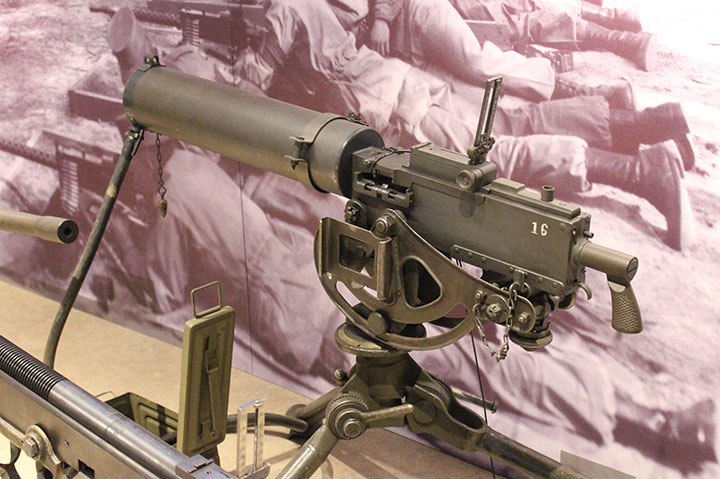
This was not to be. After six
months of tooling effort in 1942, this weapon was cancelled before it
went in to production with Brown-Lipe-Chapin. Author's photo from
the US Army Basic Combat Training Museum at Fort Jackson, SC.

A cutaway of a .30 caliber machine gun used
for training purposes during World War Two Author's photo added
11-16-2017.
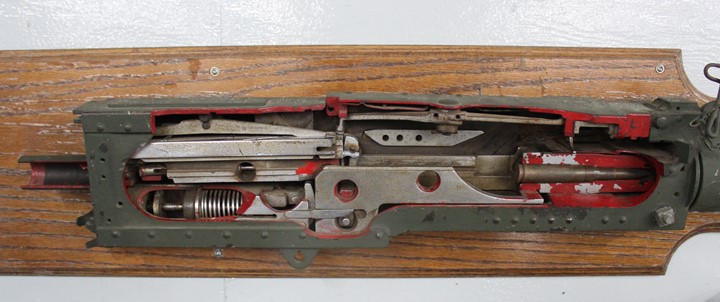
The cutaway gives an excellent view of the
internal workings of the .30 caliber machine gun built by the
Brown-Lipe-Chapin in World War Two. Author's photo added 11-16-2017
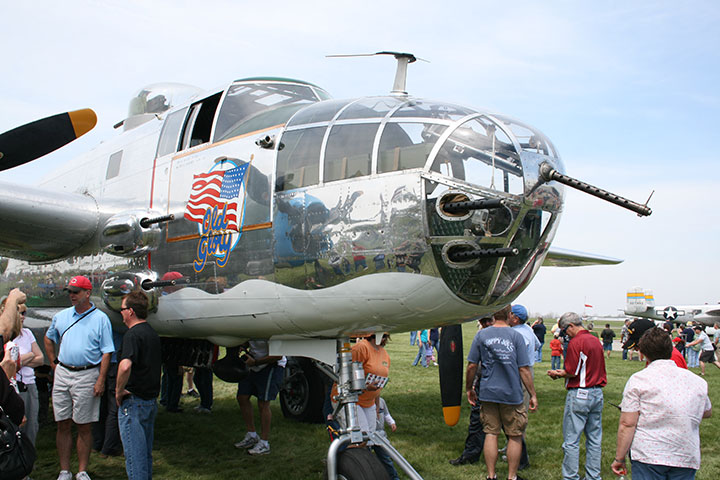
The first .50 caliber M2 aircraft
machine guns started coming off the Brown-Lipe-Chapin assembly lines in
March of 1943 with a production rate three times of the previous weapon.
The .50 M2 was used extensively on US World War Two aircraft and this photo
demonstrates its diverse use on B-25 "Old Glory". One can see two
"cheek" guns along with two fixed and one flexible gun in the glass nose.
The top turret has another two. Author's photo from the 2012
Doolittle Reunion gathering at Urbana, OH.
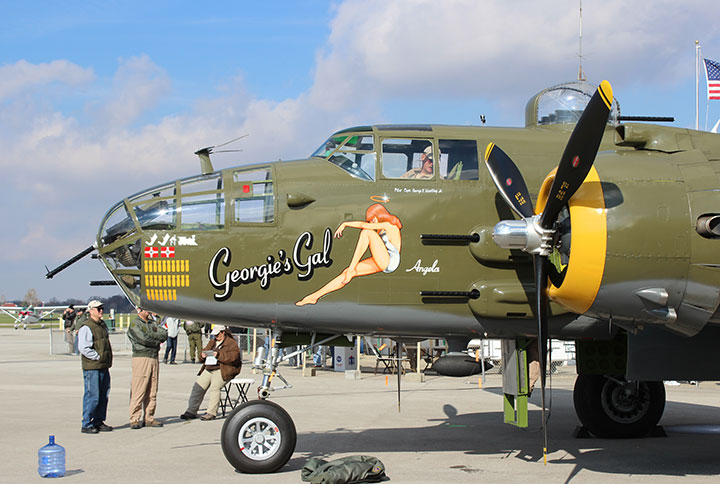
"Georgie's Gal" is armed in a similar
manner. Author's photo from the 2013 Doolittle Reunion gathering
at Urbana, OH.
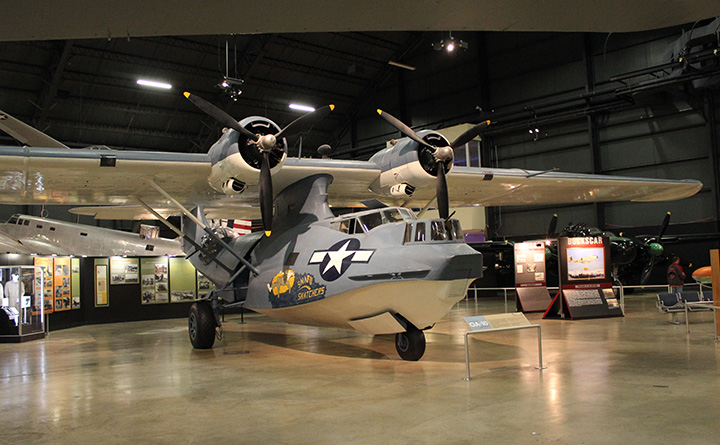
An excellent example of using both the
.30 and .50 aircraft flexible machine guns built by Brown-Lipe-Chapin in
World War Two is this Army Air Force version of the Consolidated PBY
Catalina, the OA-10A. This example at the National Museum of the
US Air Force has two of the different types of machine guns.
The Navy's PBY versions would be similarly armed. Author's photo
added 1-4-2015.
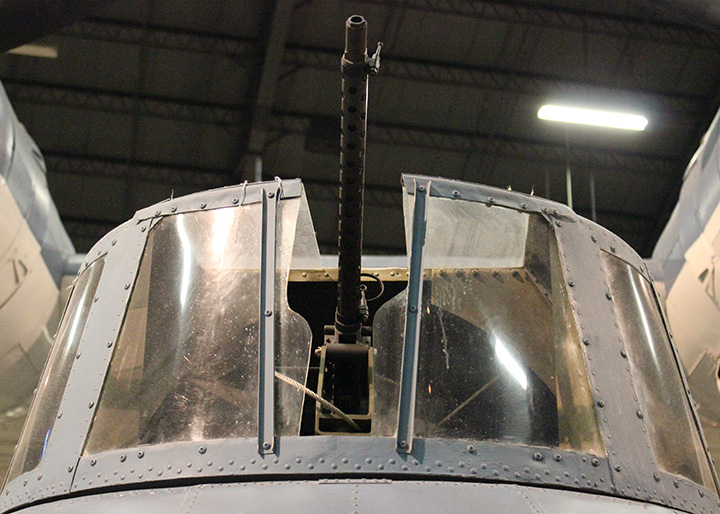
The nose turret had one .30 flexible
machine gun. Note the offset aiming site. Author's photo
added 1-4-2015.
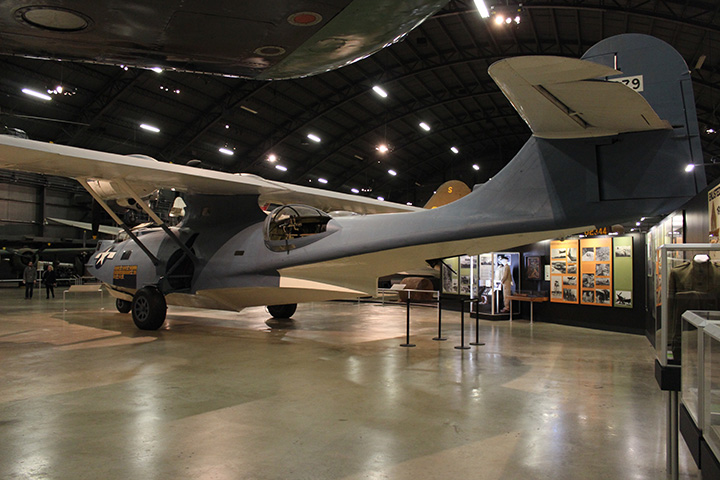
The aircraft also had side blisters, each armed
with one .50 M2 aircraft machine gun. Author's photo added
1-4-2015.
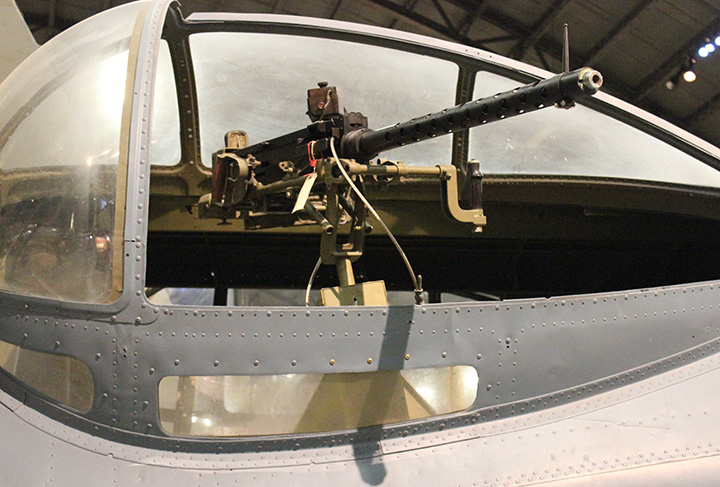
This close-up of the side blister shows how .50 M2 machine guns built by
Brown-Lipe-Chapin would be mounted in the aircraft. When not in
use, the machine gun folded back inside, and the Plexiglas blister rolled
over the opening. Author's photo added 1-4-2015.
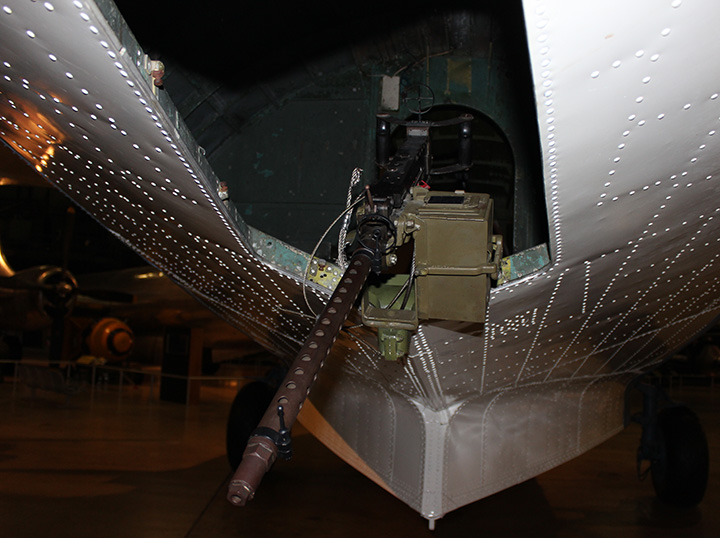
This tail, or "stinger" gun, is in the back of the hull.
It is yet another application for the .30 Brown-Lipe-Chapin
flexible aircraft machine gun. Author's photo added 1-4-2015.
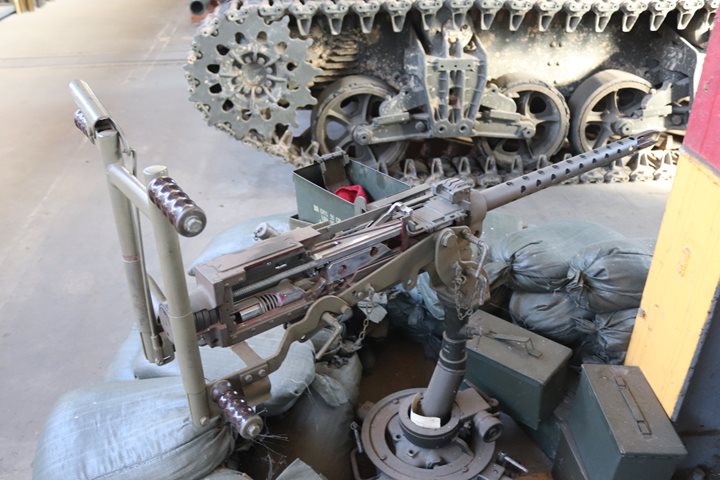
This cut-away of a .50 caliber Browning
machine gun was found in the maintenance shop of the National Armor and
Cavalry Museum at Fort Benning, GA. Author's photo added
10-7-2018.
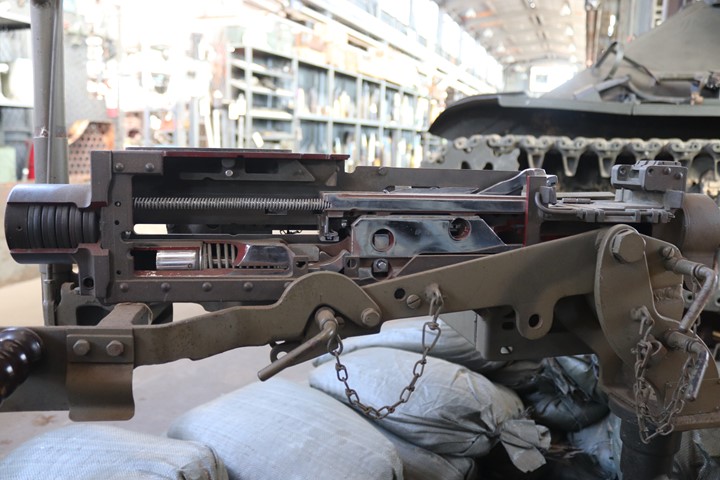
Author's photo added 10-7-2018.
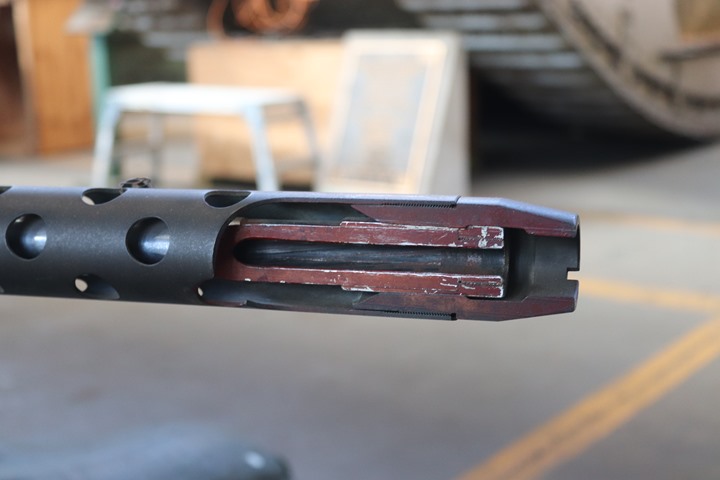
Author's photo added 10-7-2018.

Brown-Lipe-Chapin Division built
barrels for the World War Two M1 Carbine. Author's photo from the Patton
Museum at Fort Knox, KY.
Brown-Lipe Chapin
Division, General Motors
Corporation "Goes to War"
Below are selected pages from the
1944 Division's publication on its participation in World War Two.
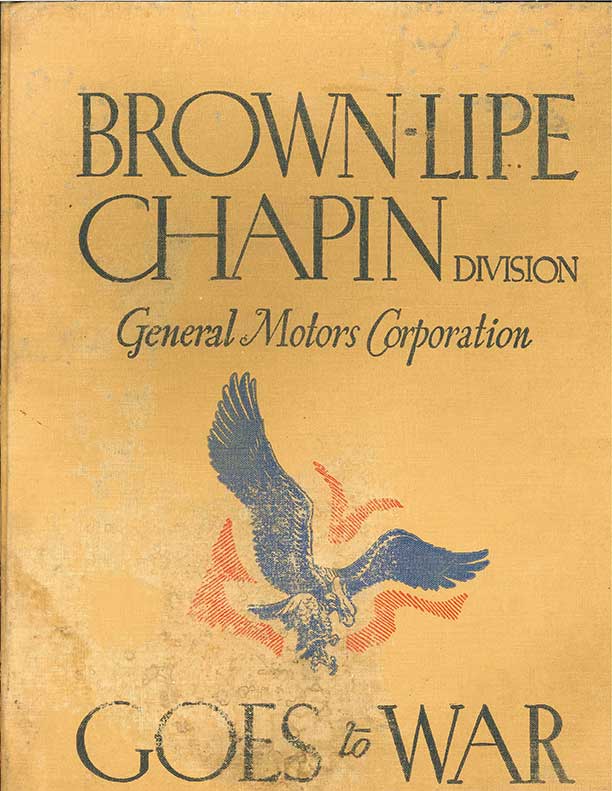
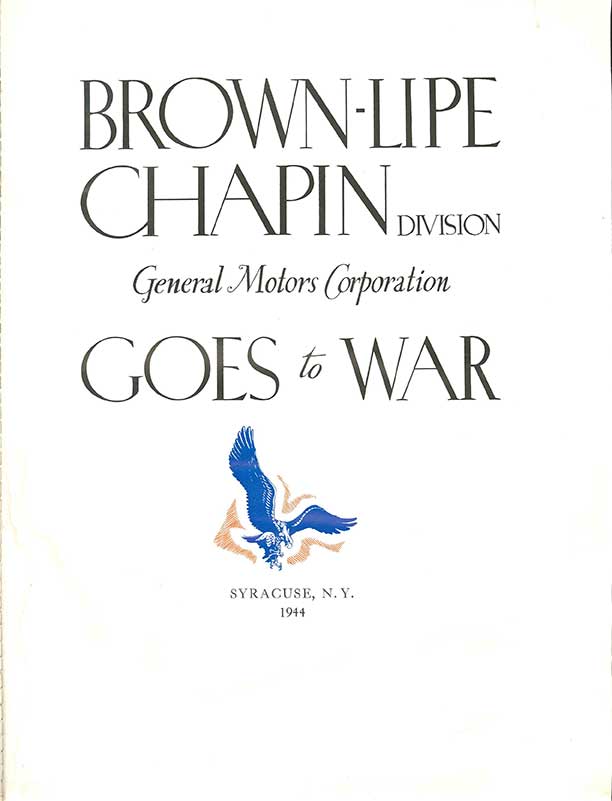
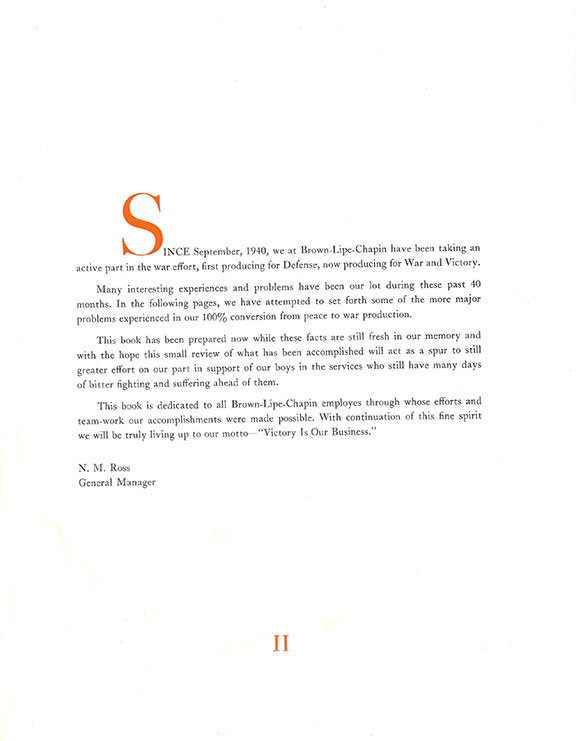
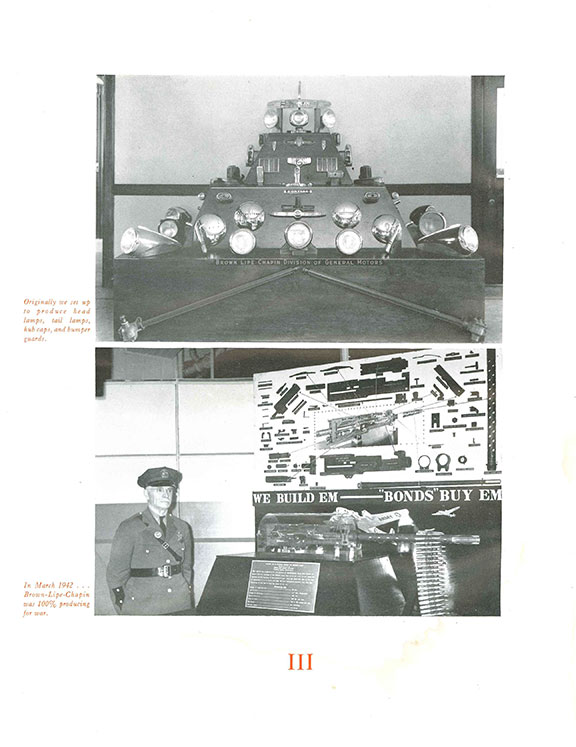
Here are Brown-Lipe
Chapin's pre-war products and the first weapon it built, the M2 .30
caliber aircraft
machine gun.
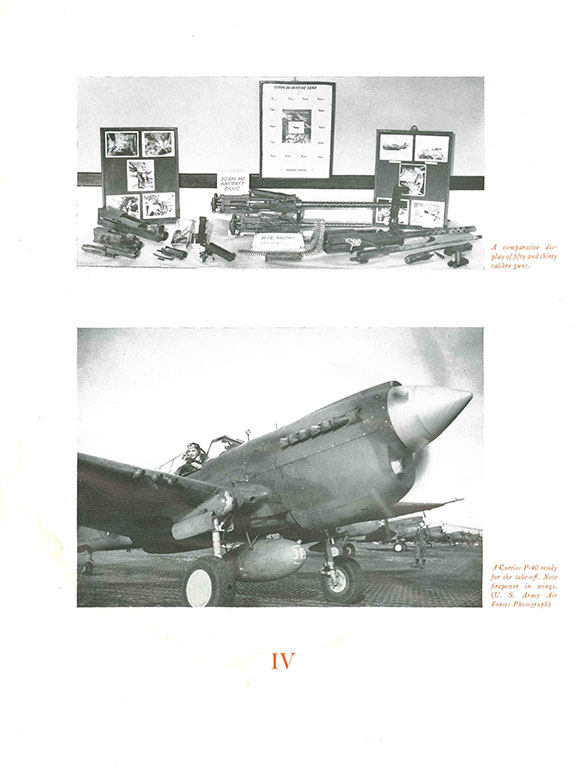
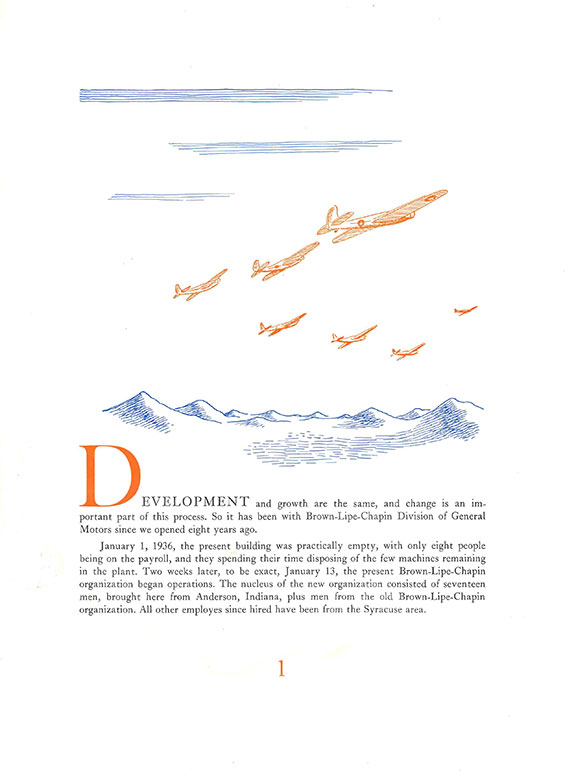
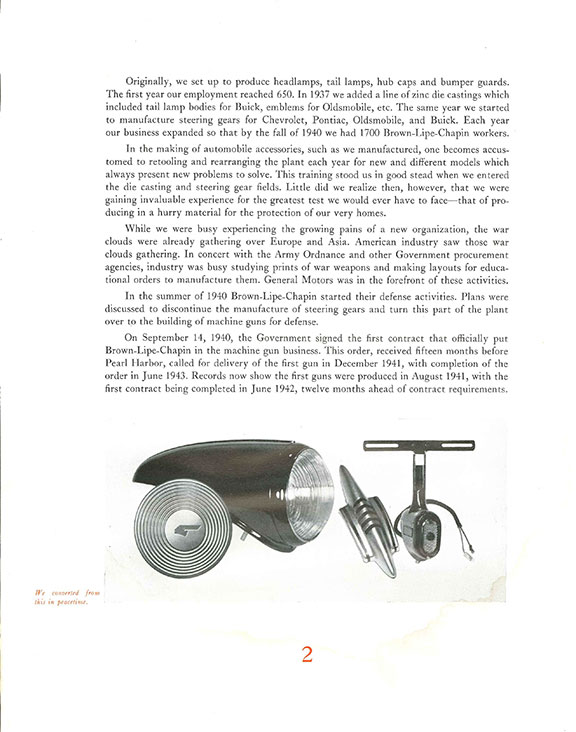
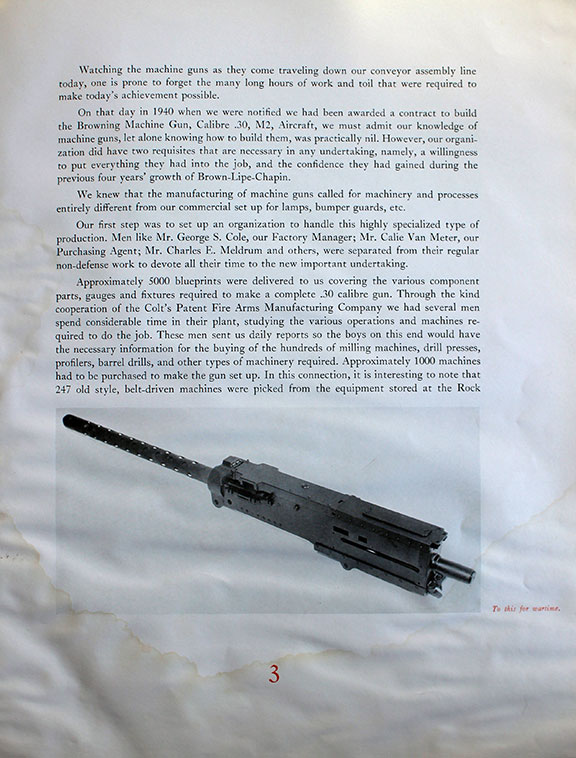
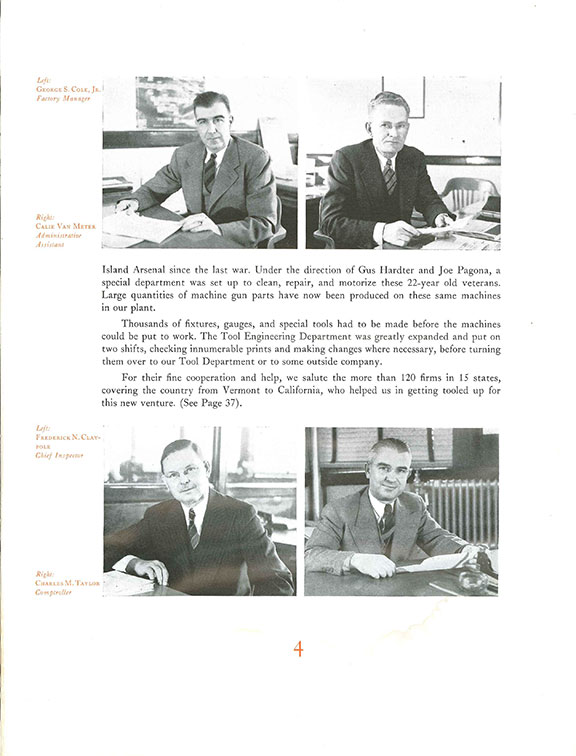
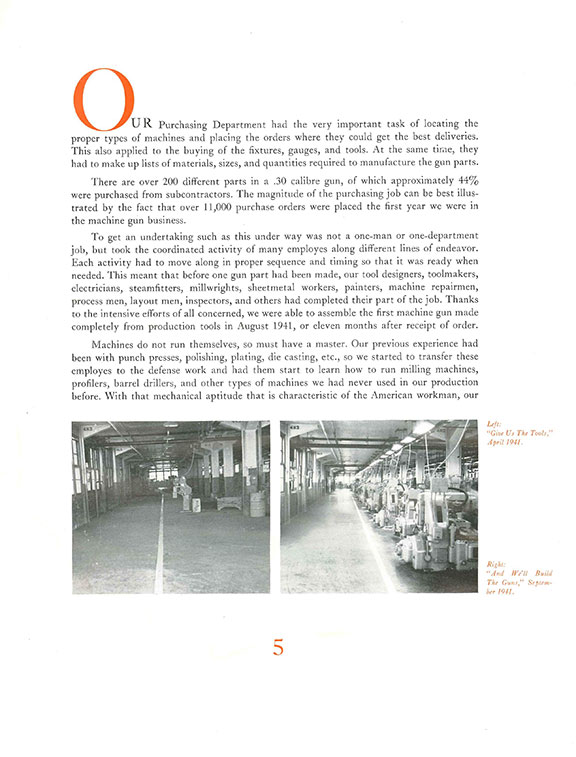

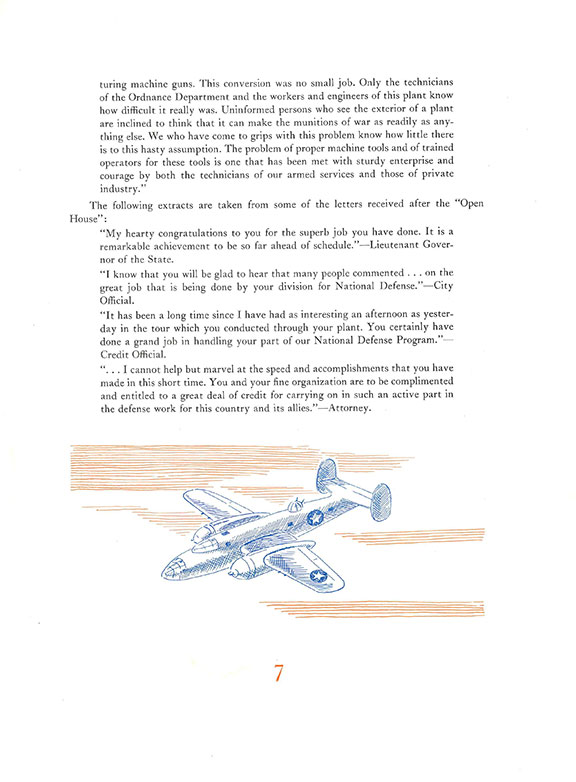
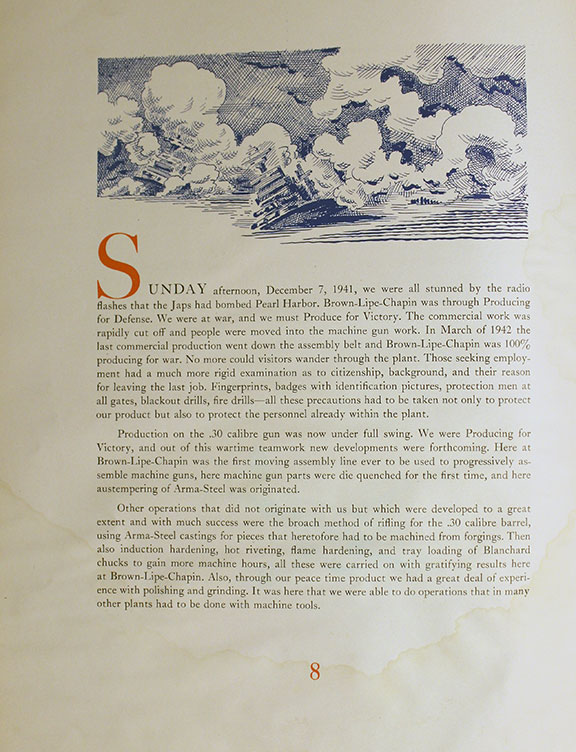
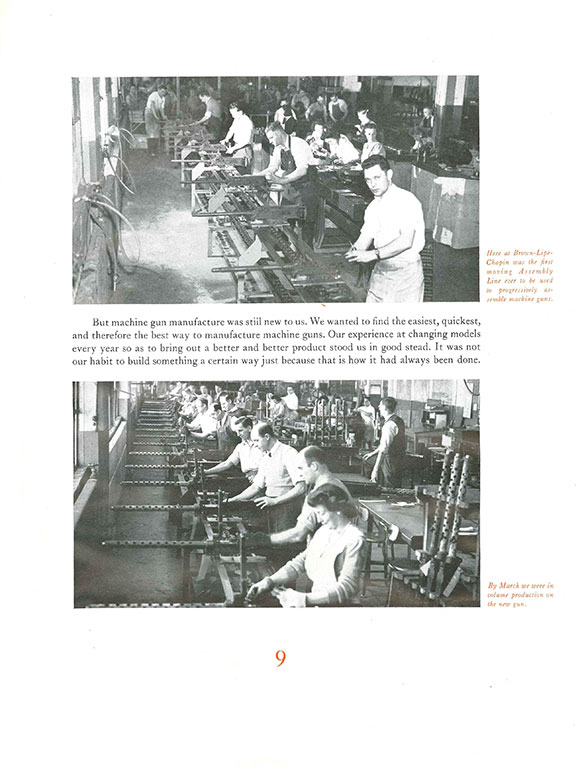
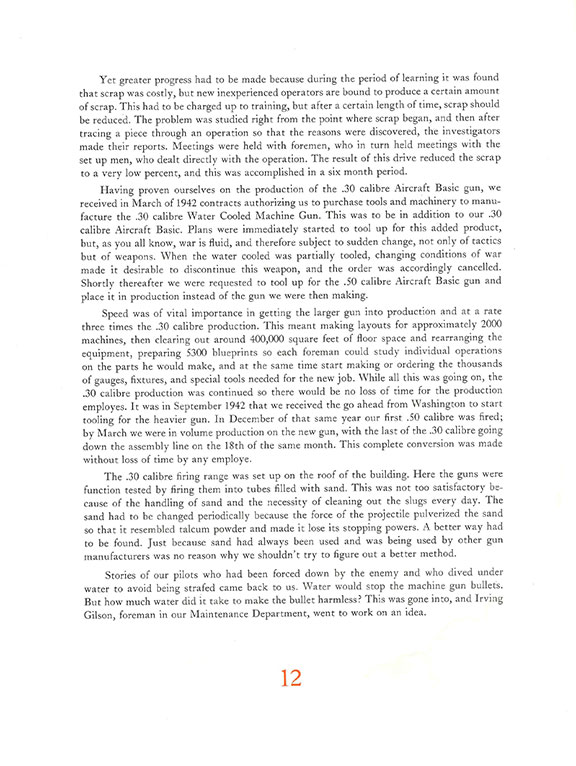
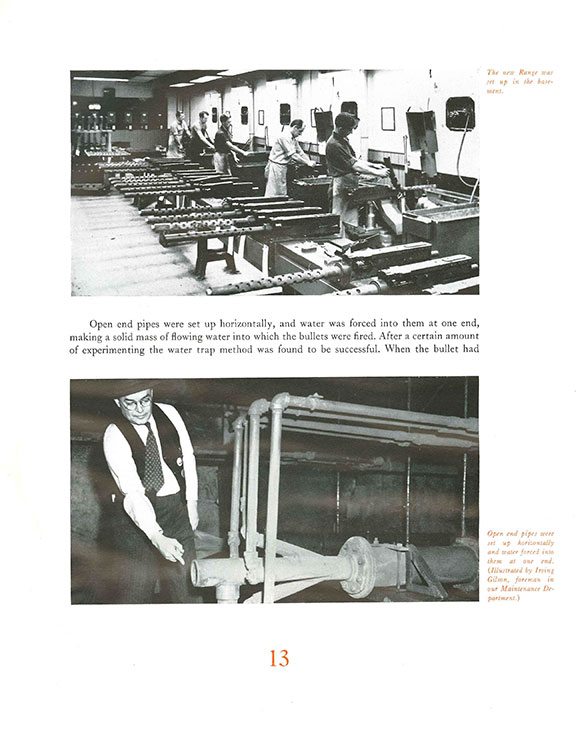
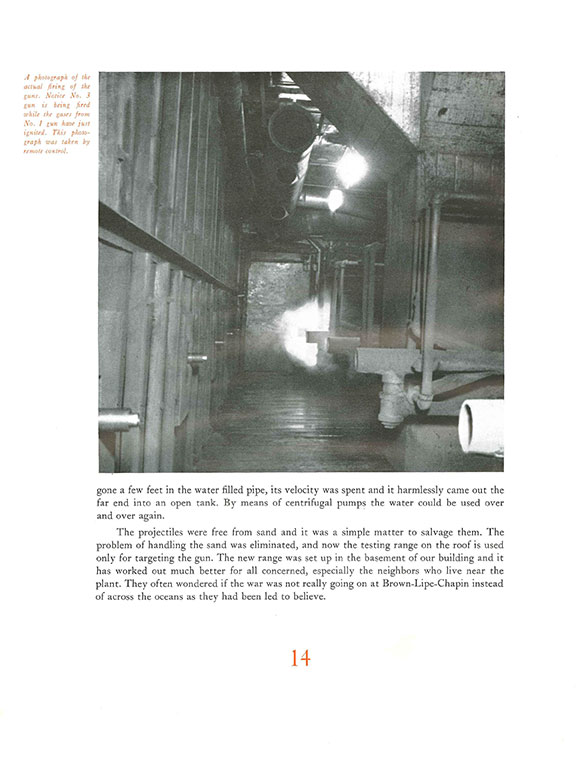

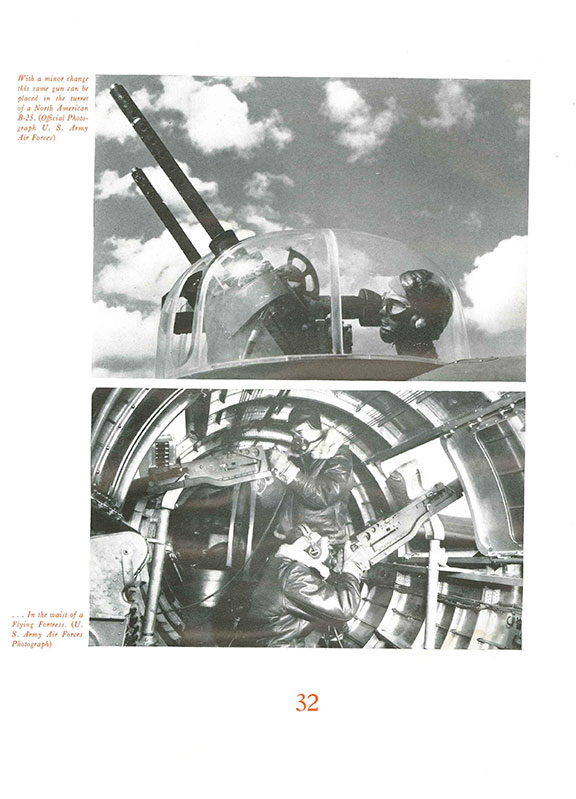
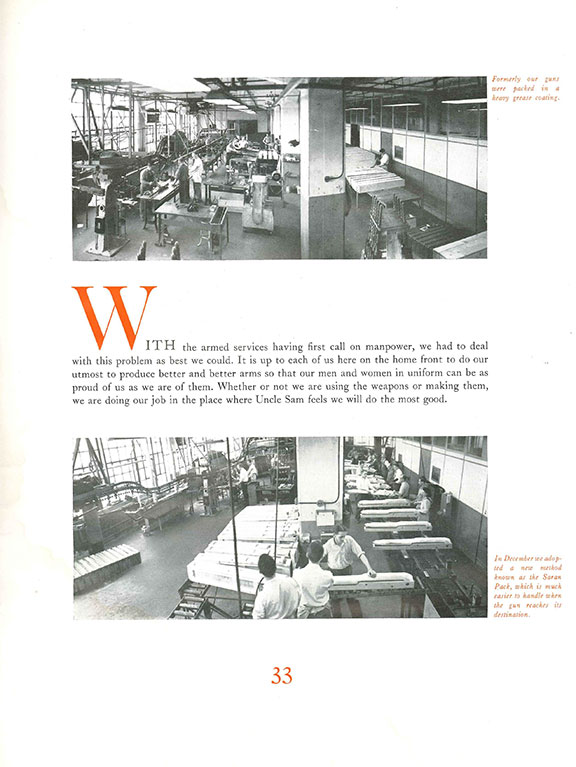
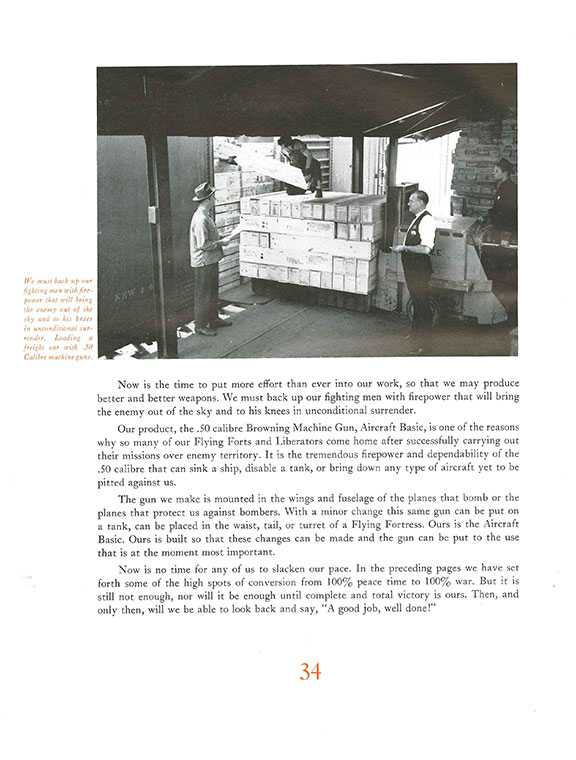
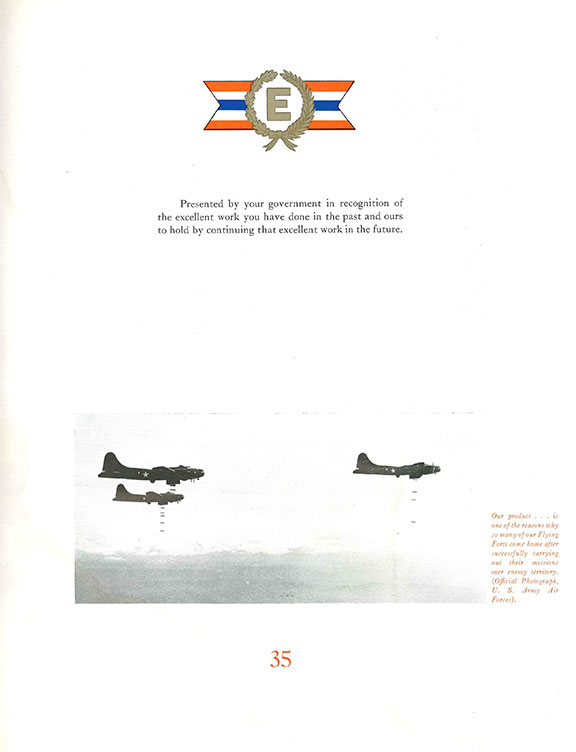
This page shows the "E for Excellence"
award. The Division would not have been able to print this unless
it won the award.
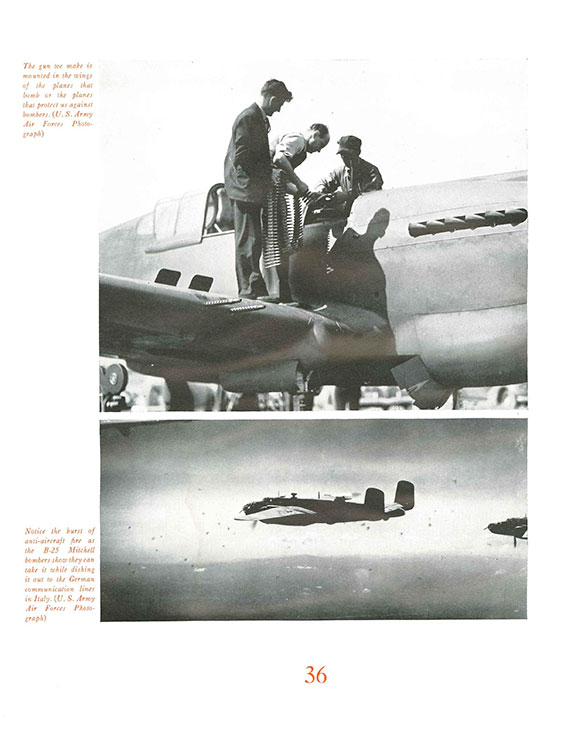

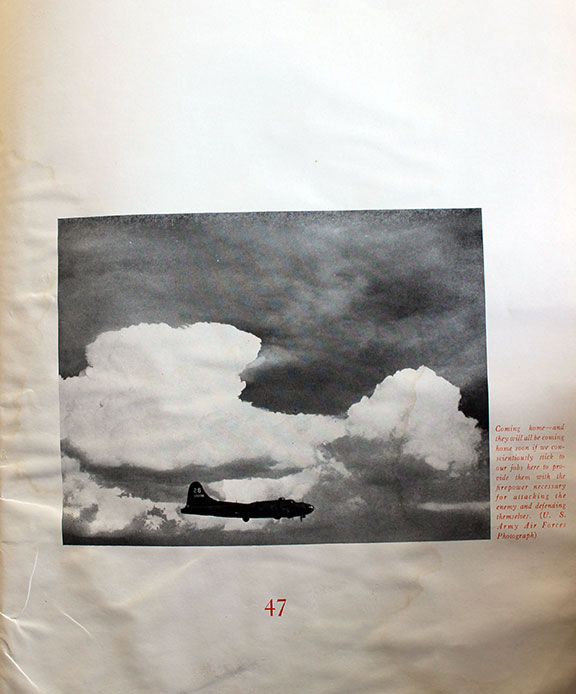
|















































